HIGH-ENERGY ELECTRONS and PROTONS
An important topic is a search for heavy resonances (generically called Z' and W') whose existence are predicted by a variety of theoretical models. RAL physicists are involved in preparations and analyses for these searches in channels where high-energy electrons are produced and have contributed to the publication of the most stringent limits set for these heavy resonances.
The images below show a dielectron invariant mass distribution (left) and the limit on the ratio of cross sections as a function of dilepton (muon and electron pairs) invariant mass

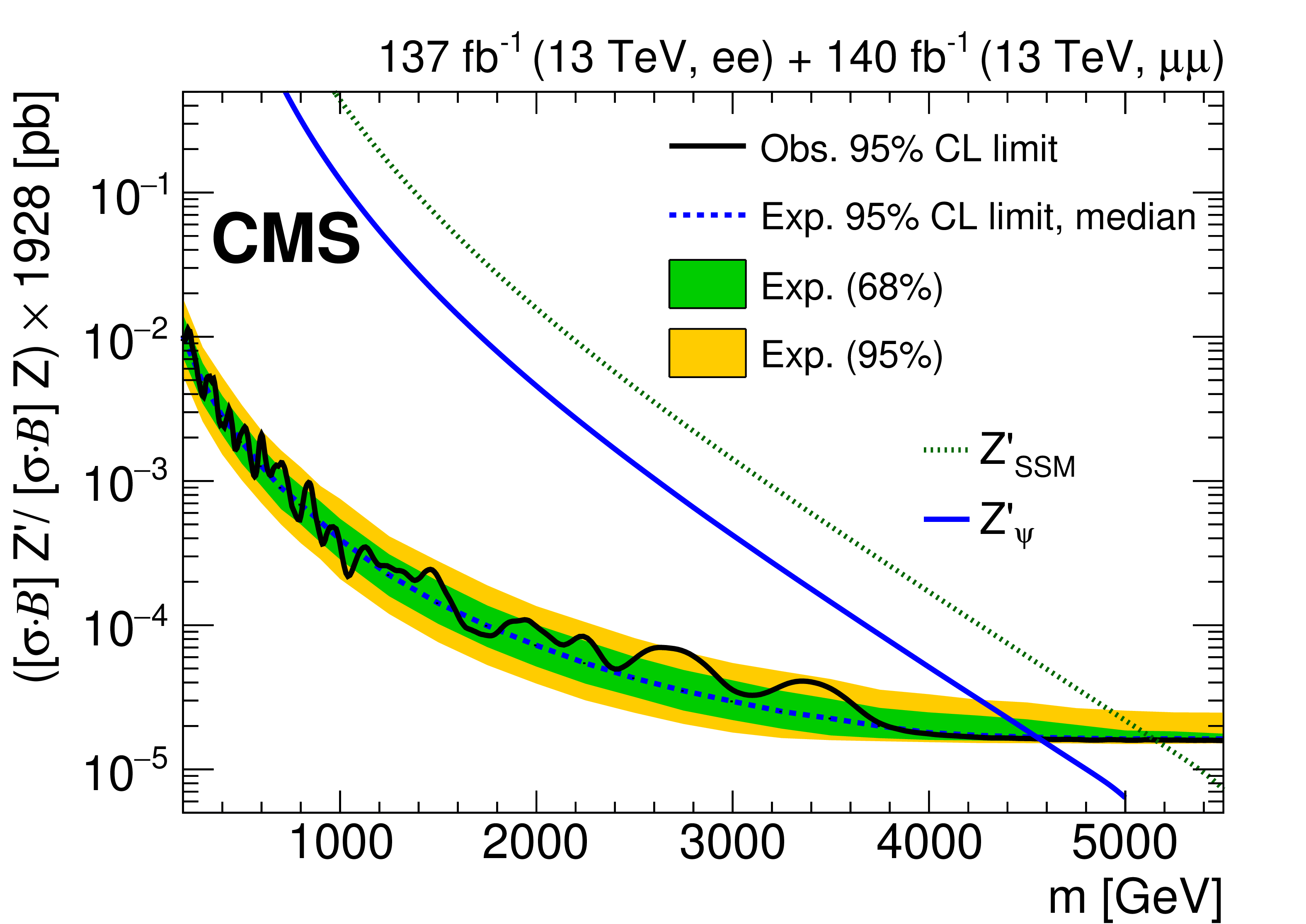 a
a
QUANTUM BLACK HOLES
Exotic theories that postulate the existence of extra spatial dimensions, predict that microscopic black holes might be produced at the LHC. If we detect them, it would be a huge advance in our understanding of gravity. We take advantage of the distinct decay signatures of quantum black holes to search for these events and set limits on their production cross-sections.
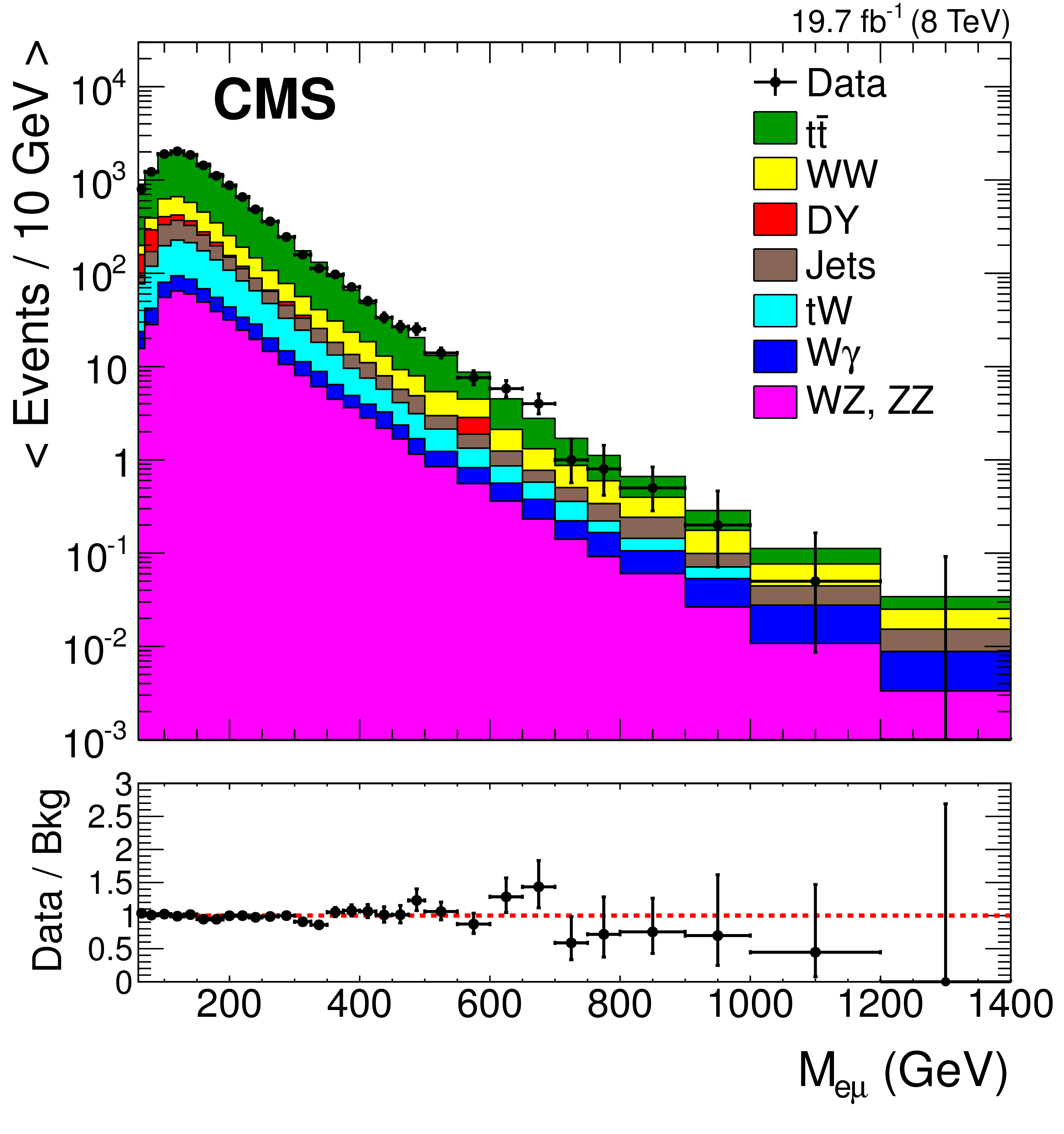
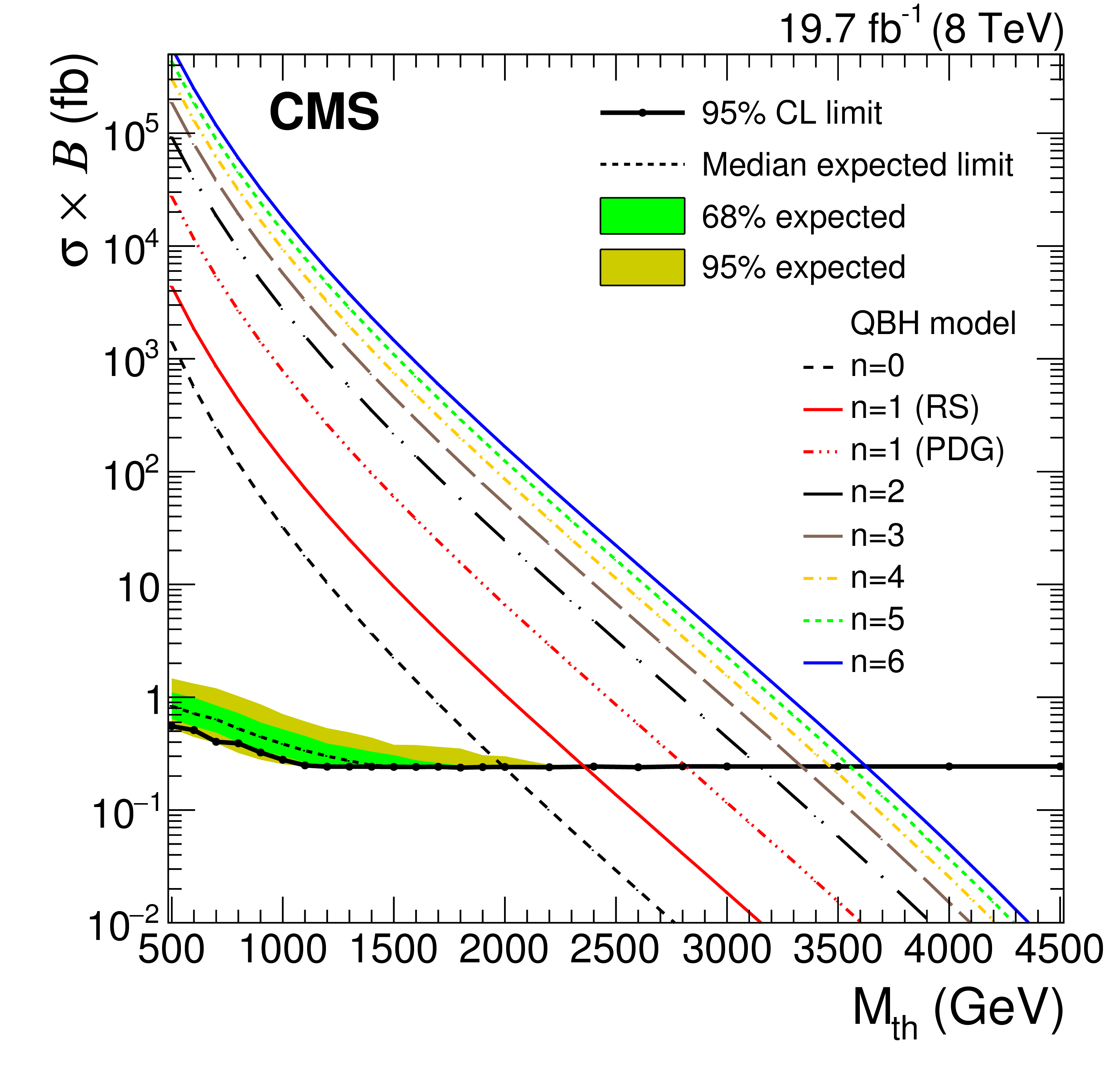 The above figures show the electon-muon invariant mass distribution (left) and the limit on the cross-section for different numbers of extra dimentions n.
The above figures show the electon-muon invariant mass distribution (left) and the limit on the cross-section for different numbers of extra dimentions n.
LONG-LIVED PARTICLES
Most of the exotic particles that the LHC is searching for (Z', black holes etc) are predicted to decay almost immediately to other particles, which we observe in our detector. A few, such as the mysterious dark matter particle may have very long lifetimes. We search for particles that fly partway through our detector before decaying into electrons or muons.
The figures below show the distribution of transverse impact parameter significance |d0|/σd for events in the signal region (|ΔΦ| < π/2) for dielectons (left) and dimuons (right).
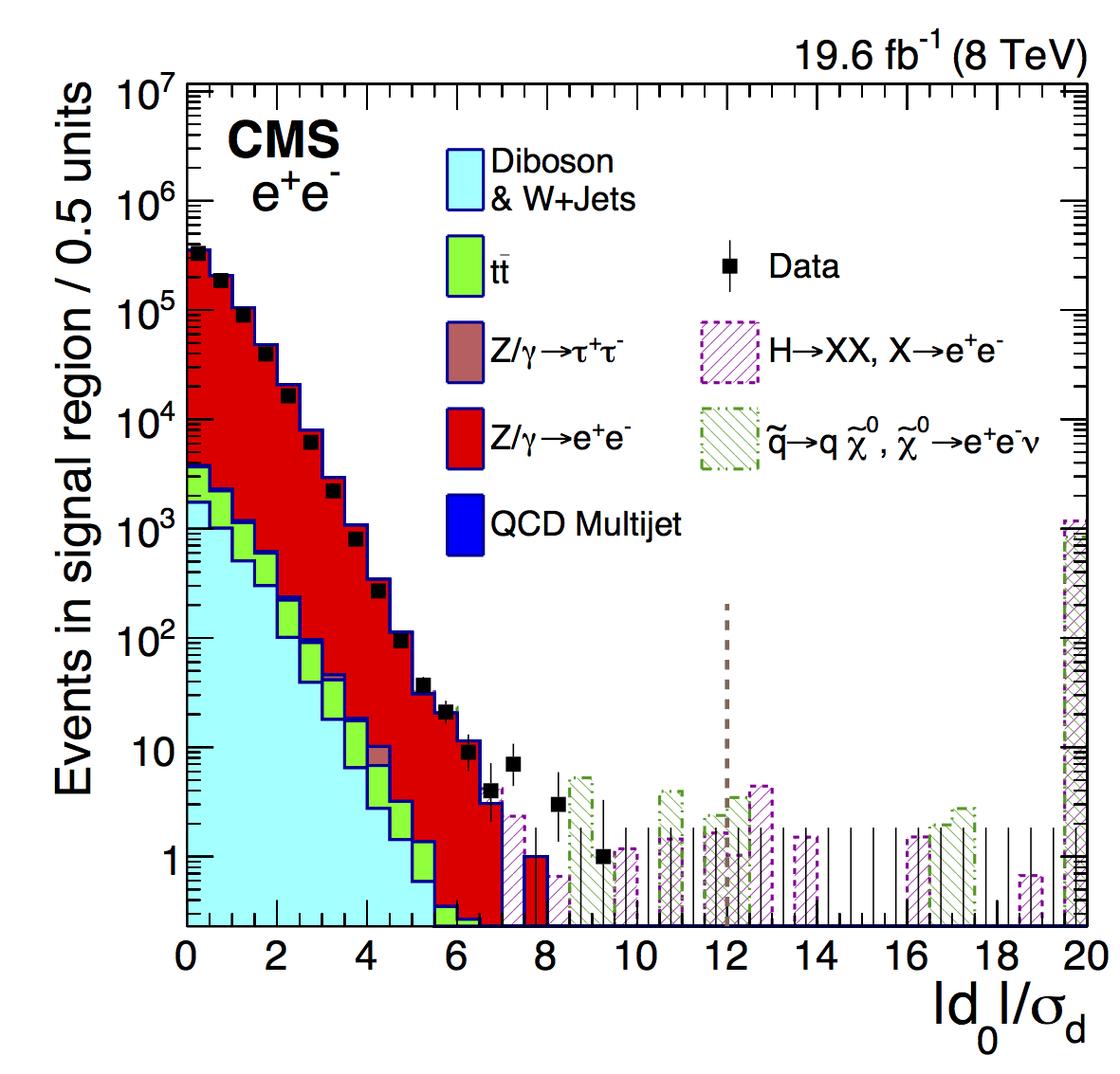
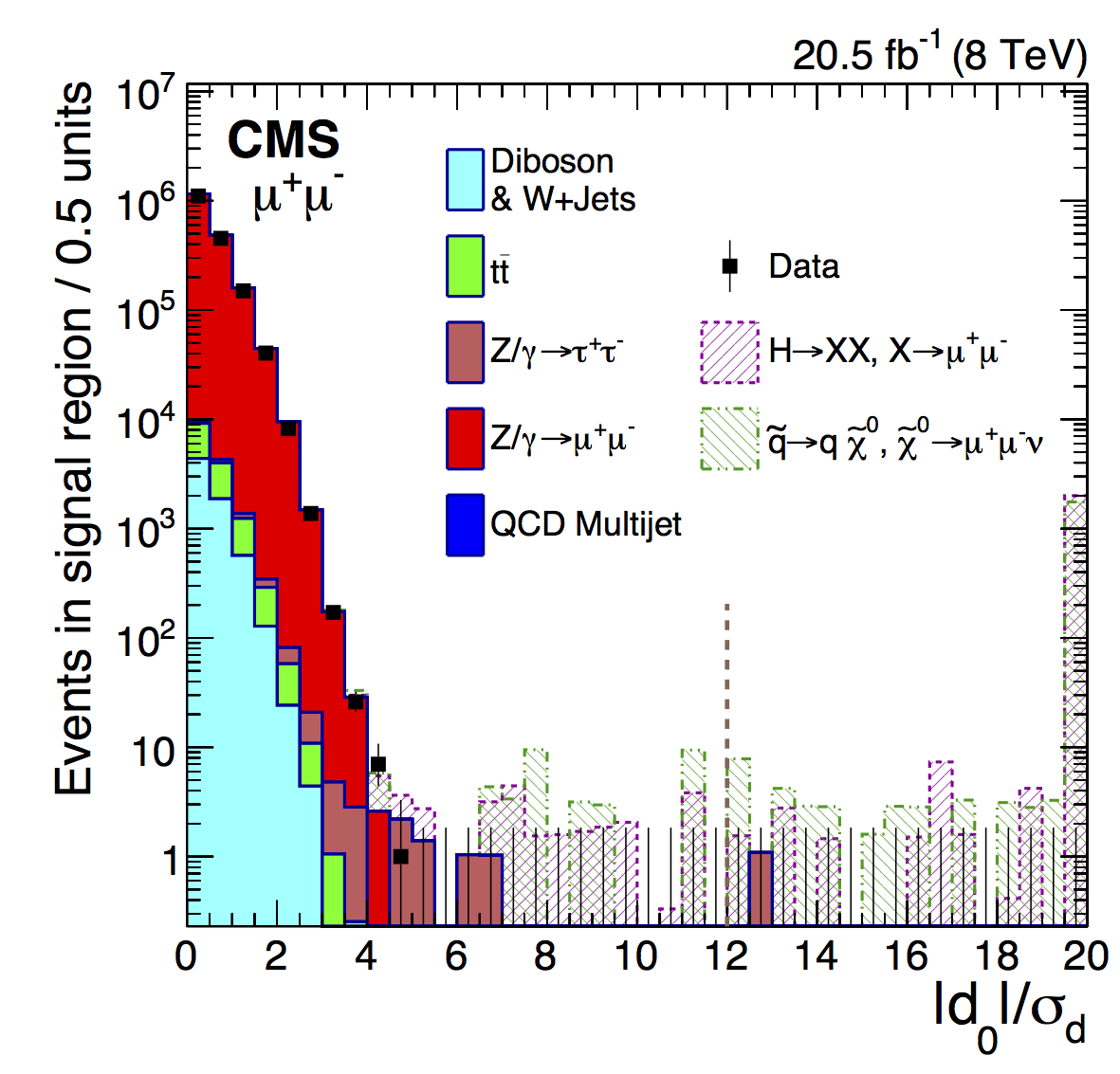
EXOTIC PARTICLES
We look for massive exotic particles that decay to boosted Z bosons. The RAL group develops techniques to identify adjacent electron pairs in the detector from boosted Z decays that are no longer isolated.
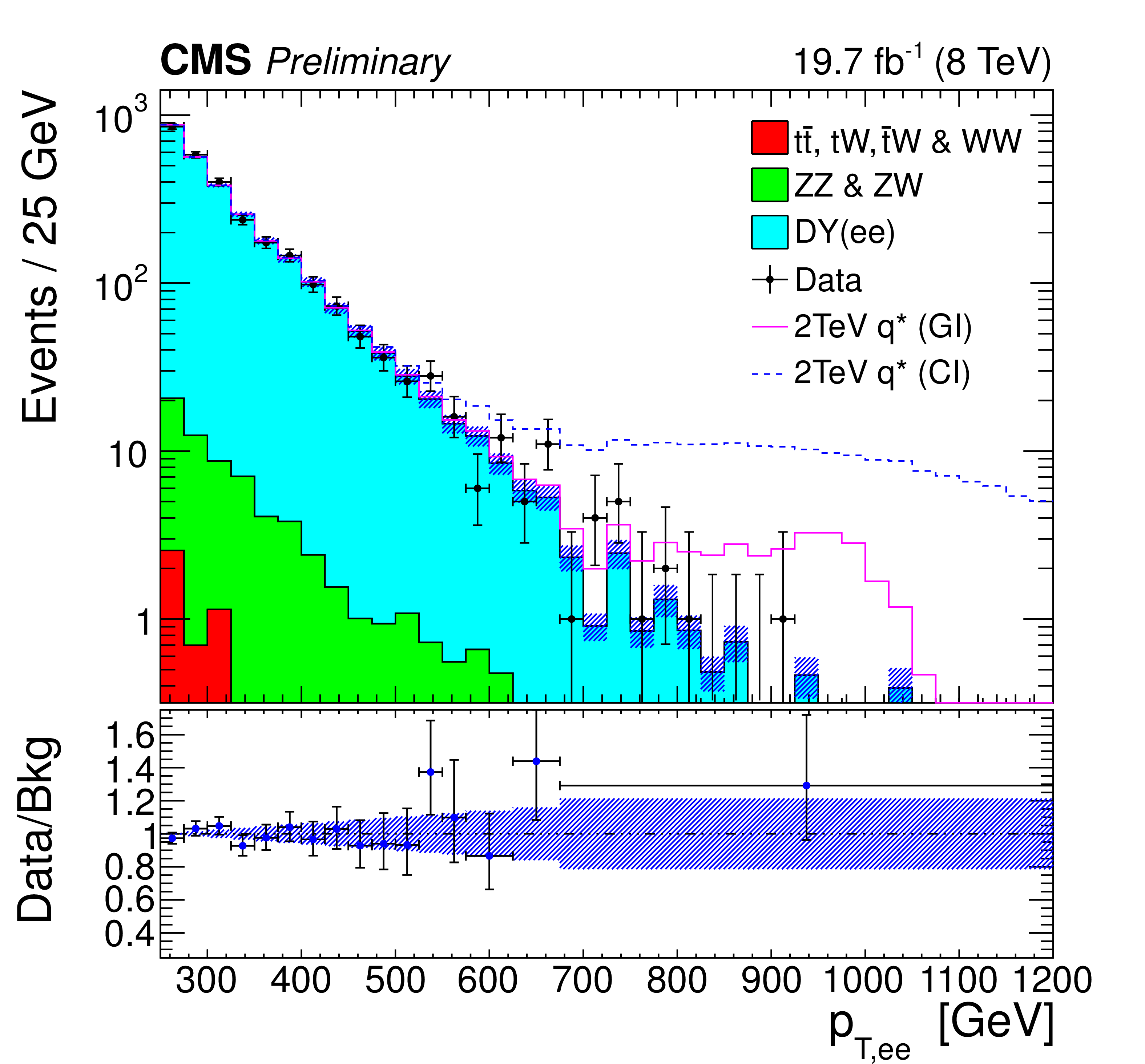
The above figure shows the predicted and observed transverse momentum spectra of reconstructed Z boson candidates passing the selection criteria.
EXOTIC HIGGS PHYSICS
With the discovery of the standard model Higgs, there is further incentive to look at models which predict additional Higgs states. Specifically, the NMSSM where we consider the case of a light Higgs that is highly boosted. We look at the decay of the Higgs to two b-quarks. As the light Higgs is typically boosted, two overlapping b-jets are produced. At RAL we look at techniques to identify events with overlapping jets.
The
PPD CMS group performed the first-ever search for this kind of Higgs
boson state, introducing sophisticated reconstruction techniques to explore
beyond the simplest
scenarios for New Physics. Using the Run II proton-proton collision dataset, no evidence for any new Higgs bosons was found,
but important new constraints were derived on their possible masses.
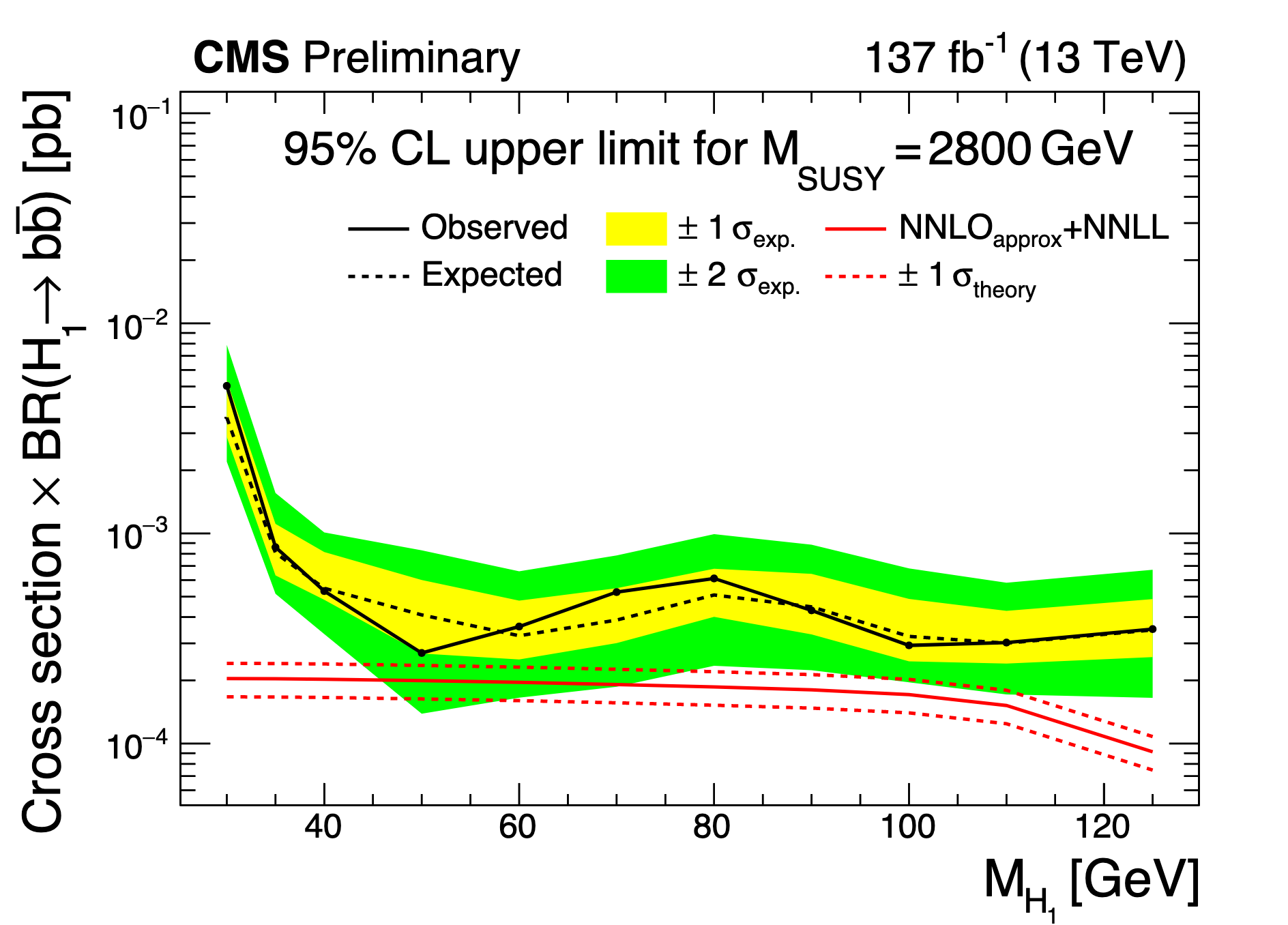
TOP PHYSICS
With the largest number of top events being available at the LHC, we are able to participate in precision measurements of spin correlation variables. We made the most precise measurement of ttbar spin correlations to date,
which set constraints, some of them world-leading, on most
of the Standard Model effective field theory (SMEFT) Wilson
coefficients relevant to ttbar production at the LHC.
The figures below (left) show the unfolded data (points) and predicted (horizontal lines) normalized differential cross sections for the diagonal spin correlation observables, while the other (right) shows the 2D constraints on one pair of Wilson coefficients (y: modified ttg vertex, x: 4-quark operator).


NExT
We work closely with the NExT institute, further enhancing our connection between theorists and experimentalists.
